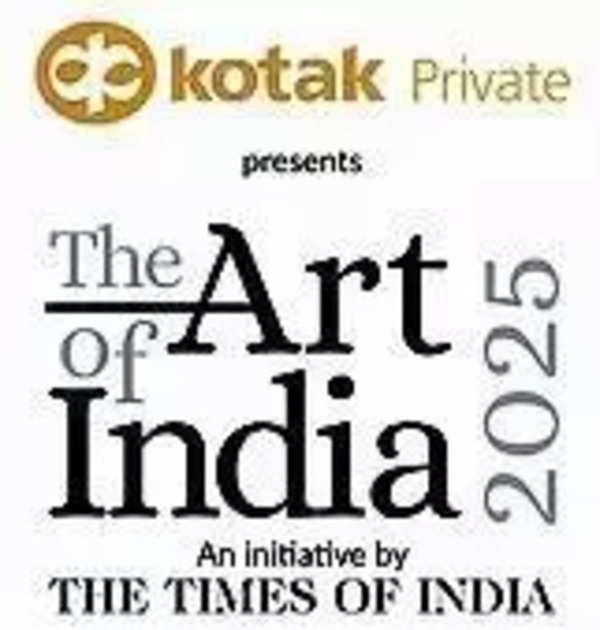The fourth edition of TOI’s Art of India (AOI) opened on a heartening note with Maharashtra’s cultural minister Ashish Shelar announcing the launch of MAHARA – Maharashtra Art Recognition Award – as the state’s commitment to its rich artistic heritage. “Starting this year, MAHARA will honour outstanding contributions in the field of art and craftsmanship,” said Ashish Shelar, who also unveiled another ambitious initiative – WAVES – World Audio Visual Entertainment Summit, set to take place in Mumbai from May 1 to 4. “Just as Davos hosts the World Economic Forum, this summit will bring together global leaders in art, culture, music, film, and storytelling to showcase India’s artistic and creative potential,” he declared, adding that Prime Minister Narendra Modi, along with several international guests, will be attending the event.
In another major push for the arts, he reiterated Maharashtra’s partnership with the central government to establish the Indian Institute for Creative Technology (IICT) on a 10-acre plot in Goregaon’s Film City. “This centre of excellence will bring together artists, sculptors, craftsmen, filmmakers, and content creators under one roof. India produces some of the finest creative work in the world, and we must recognise its potential.”

Following AOI’s grand success in Delhi, these major cultural commitments set the stage for its Mumbai edition, reaffirming the platform’s role in celebrating and acknowledging the country’s creative community.
The Mumbai edition of the exhibition, inaugurated by industrialist Ajay Piramal, cultural minister Ashish Shelar, author Shobhaa De, CSMVS director Sabyasachi Mukherjee, showcased a striking mix of masterpieces featuring legendary names, emerging voices, and under-represented artists. This edition of AOI also highlights India’s rich miniature styles and folk traditions.
Piramal made a strong case for expanding institutional support for the arts. “I feel that exhibitions like this will only help in bringing art to more and more people and encourage them,” he said, pointing out how art should transcend social and educational boundaries. “Art is for everyone. You don’t have to be highly educated or part of the elite to appreciate it. If you look at the history of India’s great masters, they came from humble backgrounds but made a name for themselves across the world,” said Piramal, welcoming the growing international interest in Indian art. “Indian art is finally being recognised abroad, but when you compare its market value to its beauty and skill, there’s still a gap,” he said, stressing on the need to not just celebrate Indian art but ensure it gets the recognition and the price it truly deserves.
Describing AOI’s fourth edition as a “big, big moment for Mumbai, and, in fact, for India”, De said, “What is special is the inclusivity, diversity and gender fluidity that’s represented so equally. And to see our folk and tribal artists receive exactly the same kind of platform as some of our great masters, it democratises art. And that’s what art should be about.”
Shanti Ekambaram, Kotak Mahindra Banking board member, dwelled on the deeper essence of art beyond its visual appeal. Quoting Amrita Sher-Gil, she reflected on the personal connection artists have with their homeland: “I can only paint in India. Europe belongs to Picasso, to Matisse. India only belongs to me.” Having taken a brief walk through the space with over 250 works by 150 renowned artists, she described it as “some of India’s most exclusive, breathtaking artwork,”
Besides its aesthetic value, Ekambaram highlighted its appeal as an investment. Citing data from the 2024 Hurun India Art List, she said, “I come from the money world, so you know, I can talk about money and how art is really valuable. The sales by the top 50 artists reached more than Rs 300 crore in 2024, a 19% increase over the previous year. A lot of the artists are seeing an increase in their value,” she said.
About how one should go about buying art, AOI curator Alka Pande had these wise words. “Let art speak to you. Let it make you pause, reflect, and see the world differently. Because that’s what art does-it reminds us of our shared humanity and our endless capacity to hope for a better future.”
For some, art is restorative; for others, it can be resistance or even an antidote in times of chaos. But while it means different things to different people, it does have a magnetic power. Its draw was visible at AOI, which attracted not only the cultural fraternity but some of the country’s best legal and corporate minds. Among those who attended were Sonjoy Chatterjee, chairman and CEO of Goldman Sachs; Anant Goenka, executive director of Indian Express; top criminal lawyer Amit Desai; and Shishir Mehta, co-head, India Practice at global law firm Ashurst.
